16 varieties of garden pinks: stunning types of dianthus to grow
There's so much to love about old-fashioned garden pinks with their gorgeous scent and pretty frilled petals

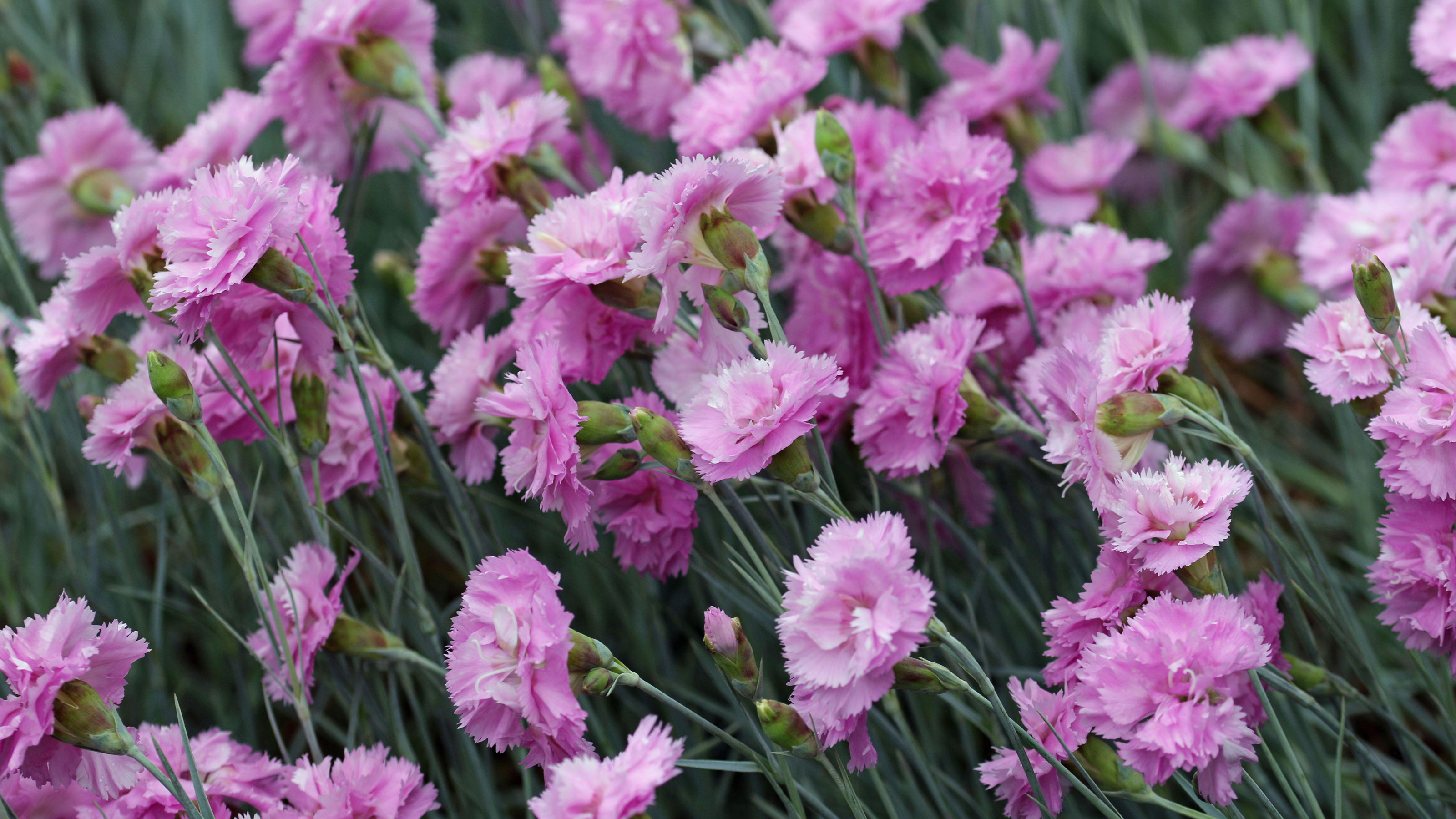
Garden pinks have withstood the test of time and are still gracing our beds, borders and containers with fragrant blooms just as they did back in Tudor times. There's a variety of garden pinks for everyone, whether you like single, characterful blooms or full sensuous doubles. Whether heritage, long-flowering, alpine or laced, there will be several to suit your garden and young plants take well from a spring planting.
Give them the sunny, well-drained spot they deserve, water them during dry spells and these hardy perennial plants will bloom year after year.
In my garden, pinks are planted along the kitchen garden pathways, mingling with a variety of thymes, sages, hyssop and other herbs. Here they have plenty of sun and moderately good, well-draining soil.
Use these versatile plants for flower bed ideas, border fronts, raised beds, containers and in the cutting garden. There is also a range of low-growing species and cultivars perfect for rock and Mediterranean-style gardens and alpine sinks.
Grow stunning flowers with our favourite types of garden pinks
Garden pinks belong to the genus Dianthus that includes carnations and Sweet Williams. Although their flowers very often are pink, the name comes from the ‘pinking’ or serration of petals at their tips.
Another, older, name is gillyflower though this can apply to a whole range of old-fashioned scented plants such as wallflowers and stocks. Another name ‘sops in wine’ came about because the deliciously clove-scented flowers were a cheap alternative to true cloves for flavouring wine. The petals are edible and used for decorating salads and cakes.
Enjoy our pick of 16 of the most perfect garden pinks chosen to show the range of cultivars available. They’ll need at least half a day of sunshine but they're one of the best plants for small gardens, for gorgeous summer color and perfume.
1. ‘Bailey’s Celebration’
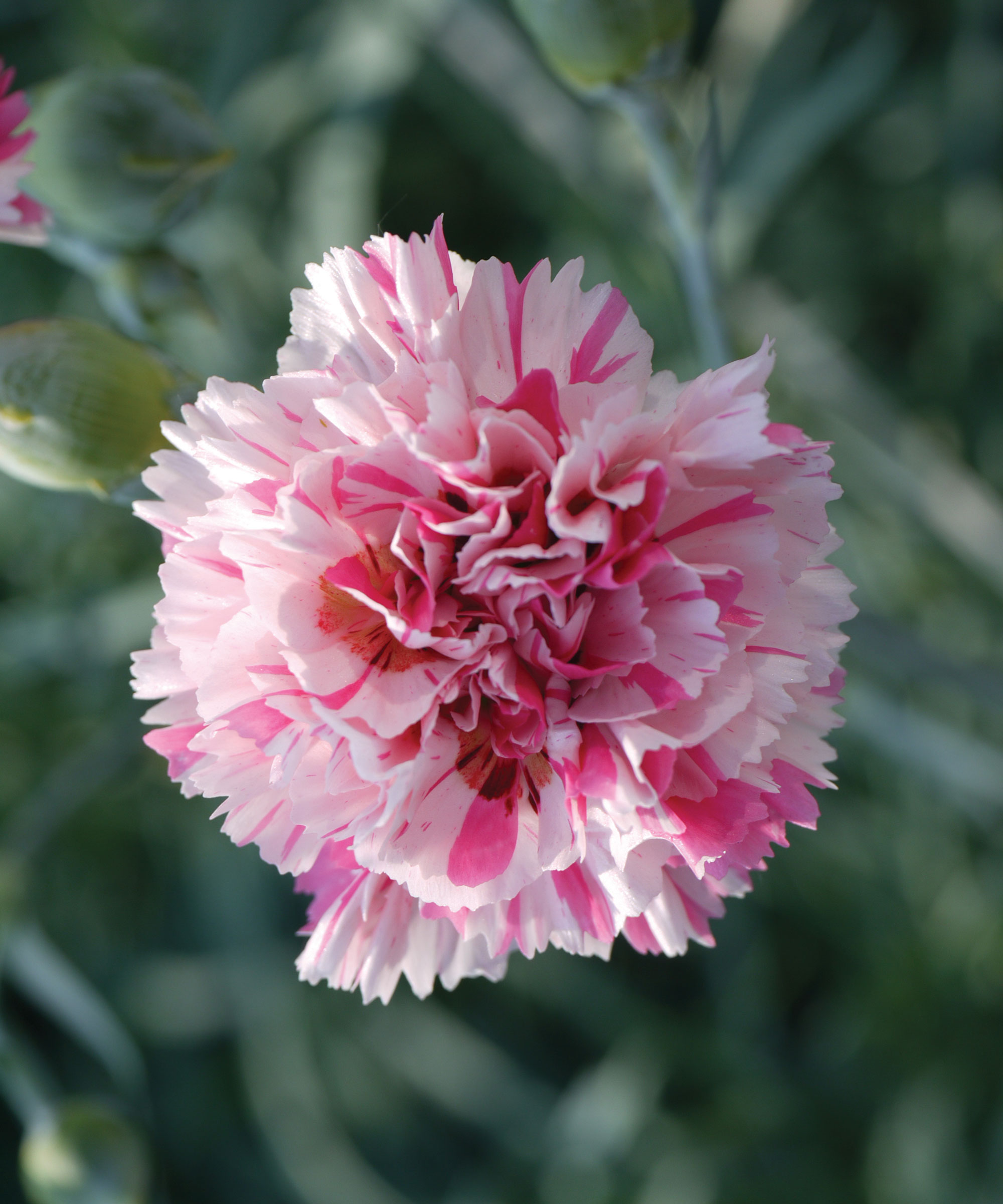
- Hardiness: USDA 6b/7a
- Height: 14in (35cm)
- Spread: 18in (45cm)
Showy double flowers are packed with white petals irregularly splashed with pink. They are glorious, but regularly deadheading flowers will be a benefit if you chose to grow these.
This is a good upright variety with a generous flowering season from spring through summer and the long-stemmed fragrant blooms are great for cutting.
Pair with purple Lavandula angustifolia ‘Hidcote’ and pink-flowered Geranium x riversleaianum ‘Mavis Simpson’ for a pretty planting scheme.
2. Dianthus carthusianorum
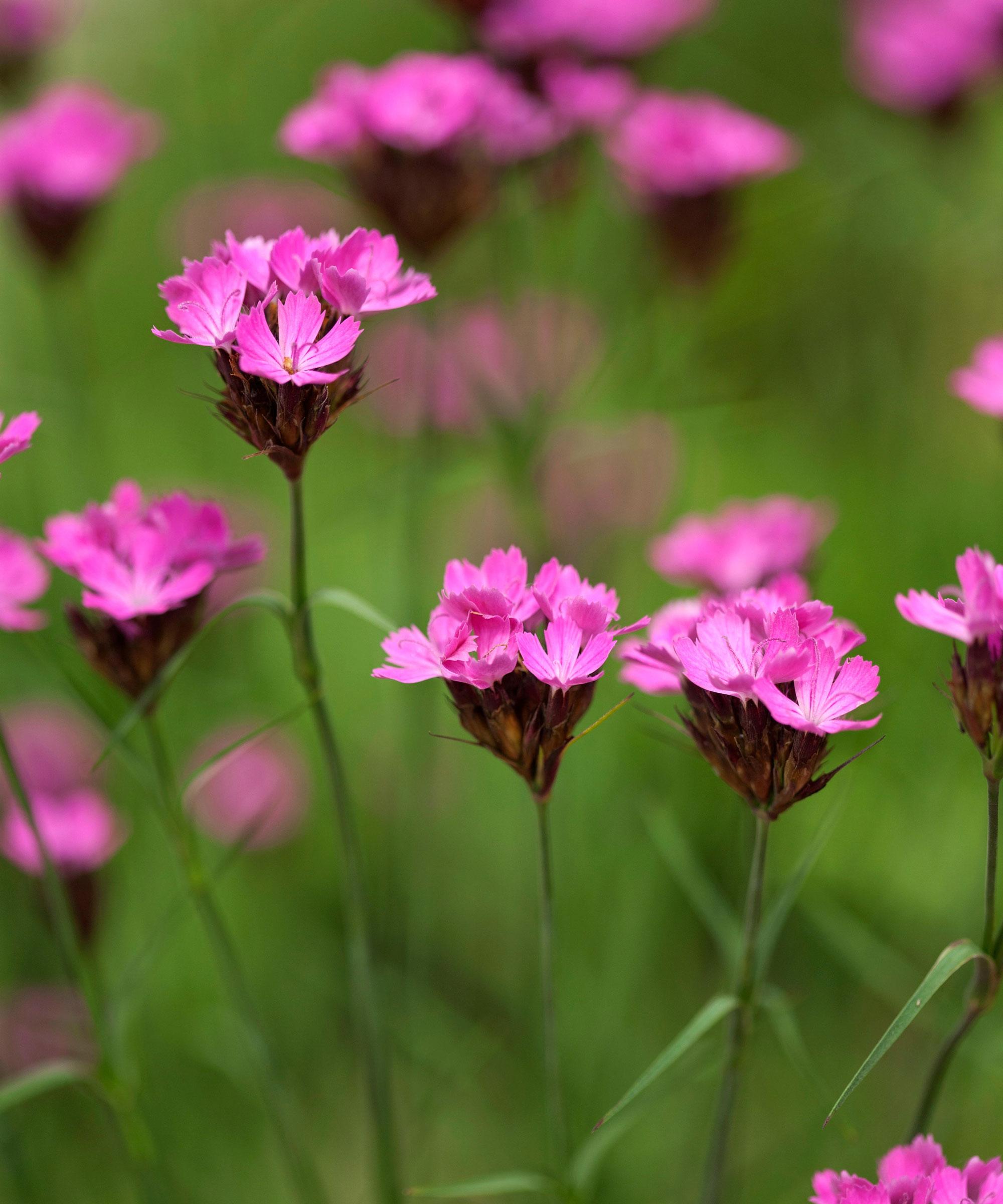
- Hardiness: USDA 6b/7a
- Height: 18in (45cm)
- Spread: 8in (20cm)
The perennial Carthusian pink from Southern and Central Europe is believed to have been introduced to the UK by Carthusian monks during medieval times.
A good option if you want to grow flowers from seeds, the plants with grassy foliage send up tall stems topped by clusters of magenta flowers emerging from dark maroon buds. This flowers from early summer to early autumn and often features at the Chelsea Flower Show.
3. 'Coconut Sundae'

- Hardiness: USDA 6b/7a
- Height: 10in (25cm)
- Spread: 18in (45cm)
A deservedly popular pink for double, spicily fragrant blooms whose white petals remind me of coconut flakes and are deeply marked at the base with maroon blotches.
Typical of the Scent First Series, growth is compact and the spring and summer flowers fragrant, perfect for adorning container gardening ideas, the edges of raised garden beds and alongside pathways.
4. ‘Devon Cream’
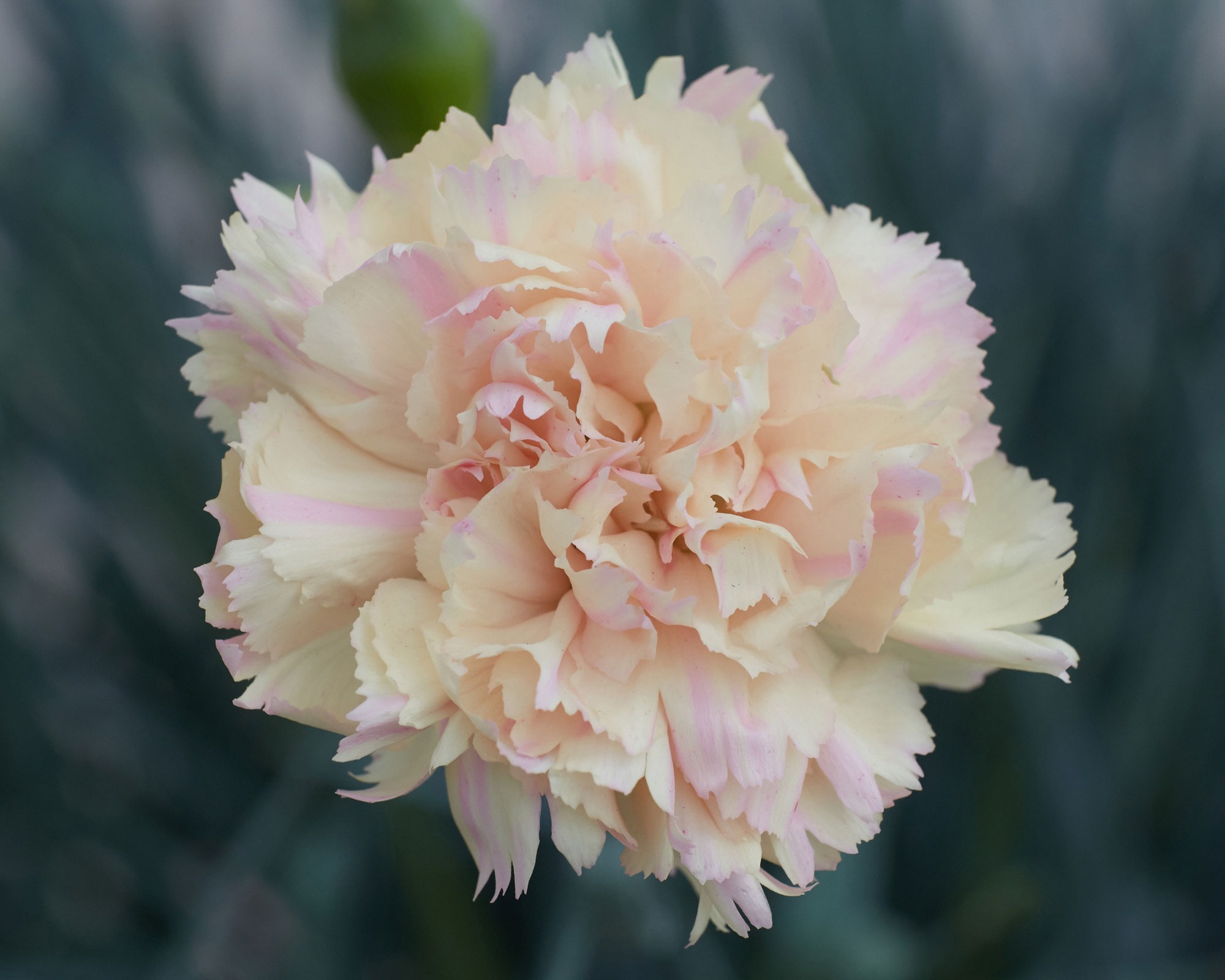
- Hardiness: USDA 6b/7a
- Height: 14in (35cm)
- Spread: 14in (35cm)
Double blooms are dreamy confections of clotted cream with hints of pale lemon, palest peach and light rose. These garden pinks are compact, there is good fragrance and a summer to autumn season of carnation-like blooms that are excellent for cutting.
Grow with contrasting blue-flowered Geranium ‘Azure Rush’ or small, shrubby apricot-flowered Potentilla fruitcosa ‘Bella Sol’.
5. ‘Diane’
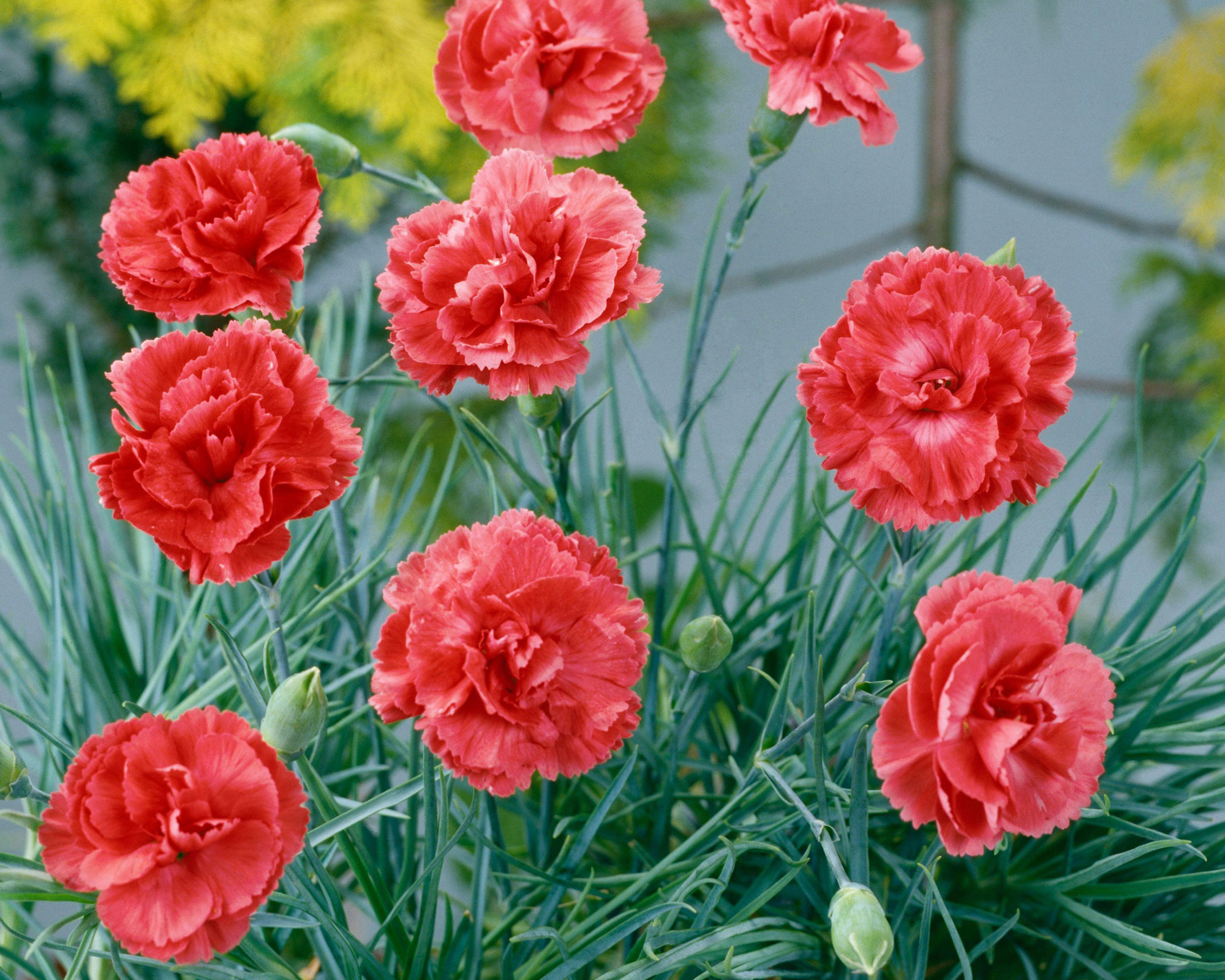
- Hardiness: USDA 6b/7a
- Height: 14in (35cm)
- Spread: 18in (45cm)
This colorful pink is a sport of popular, pink-flowered Doris and a child of the swinging Sixties. Shapely double blooms of rich, dark salmon emit a good clove scent and petals are well ‘pinked’ at the outer edges.
Summer flowers are long-stemmed and good for cutting, combining well with dainty, cream and green-flowered tobacco Nicotiana ‘Starlight Dancer.’
6. ‘Gran’s Favourite’
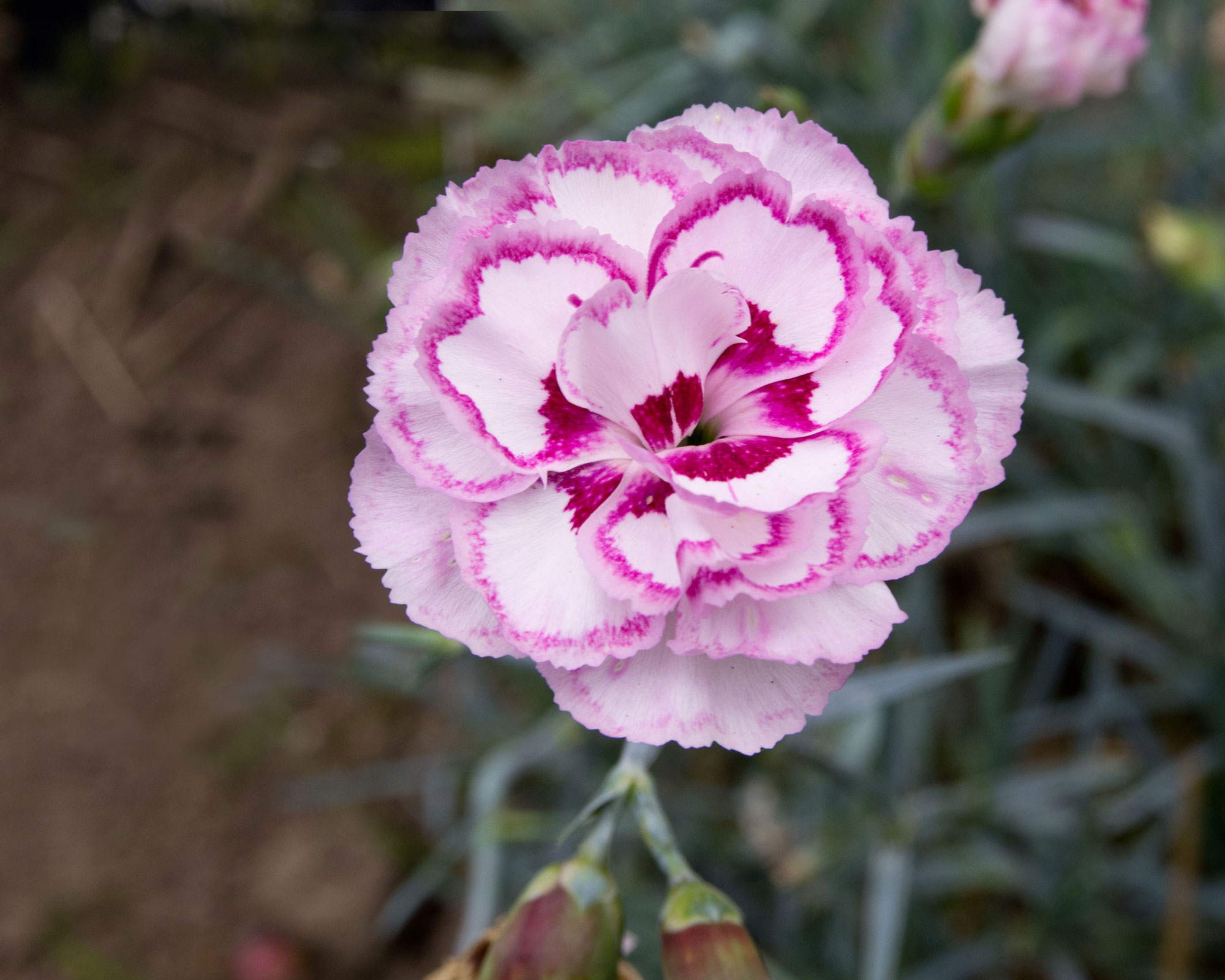
- Hardiness: USDA 6b/7a
- Height: 10in (25cm)
- Spread: 18in (45cm)
Bred in 1966, this laced double pink remains a firm favorite, being easy to grow with a long early summer to early fall flowering season and blessed with dainty flower markings and a strong clove scent.
The Victorians were great fans of laced pinks, whose blooms have a contrasting center and edge to the petals. Here white petals are marked with purple-pink.
7. ‘La Bourboule’
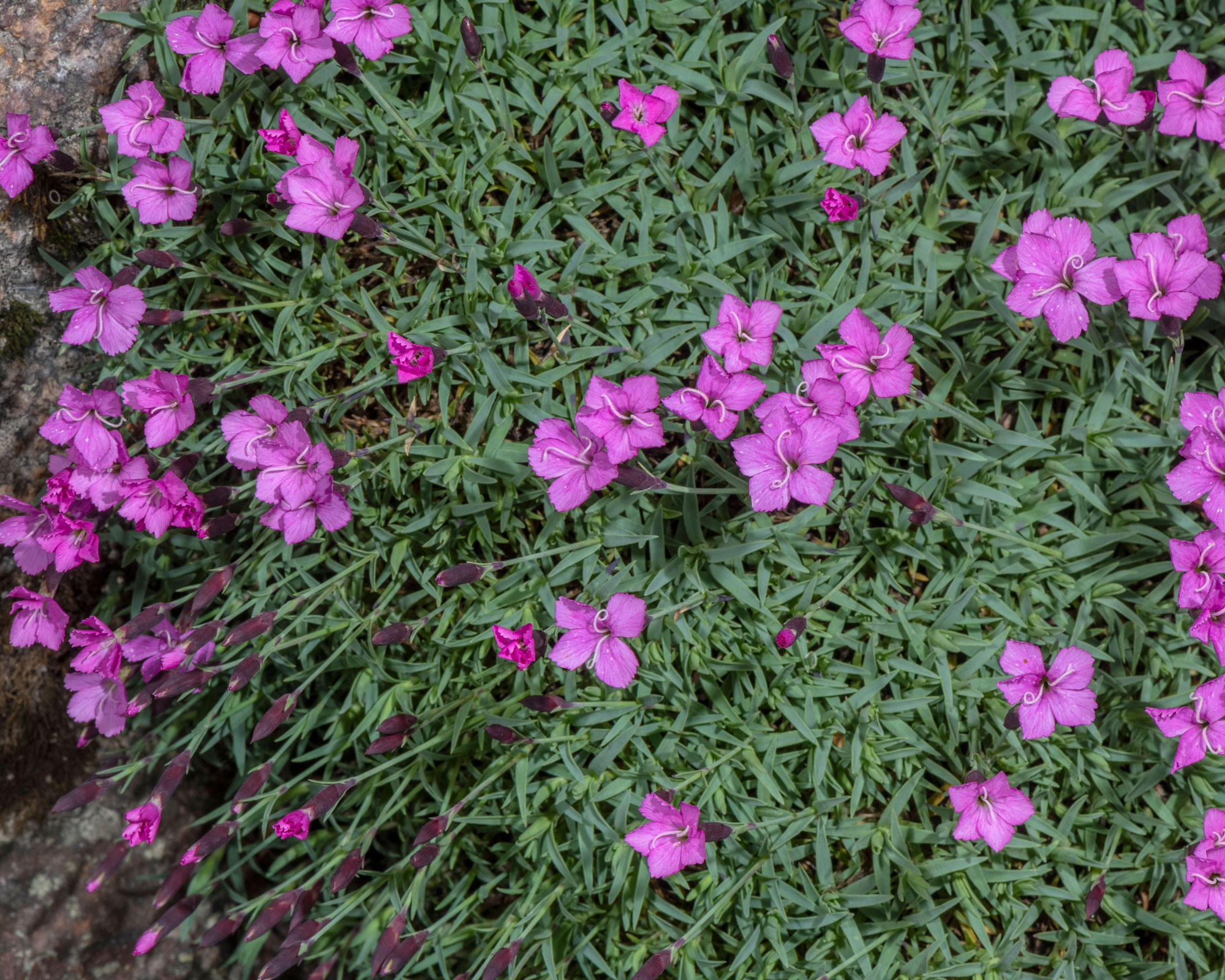
- Hardiness: USDA 6b/7a
- Height: 4in (10cm)
- Spread: 12in (30cm)
Classed as an alpine pink, this mound-forming plant is perfect for raised beds, containers and small rock garden ideas. A profusion of clove-scented single pink flowers with prettily fringed petals open against a mat of grey-green foliage.
A good but well-drained soil is important. Grow alongside white-flowered Silene alpestris and tumbling, dainty Gypsophila repens ‘Dorothy Teacher’.
8. 'Memories'

- Hardiness: USDA 6b/7a
- Height: 12in (30cm)
- Spread: 12in (30cm)
From the Scent First Series, this fragrant double pink opens white flowers with a hint of green at the base from late spring through summer.
This has been suggested as a replacement for good old ‘Mrs Sinkins’ whose clove-scented blooms are too often blighted by rain and spill from their split calyces over a lamentably short period but I have yet to compare perfumes.
9. 'Pop Star'

- Hardiness: USDA 6b/7a
- Height: 8in (20cm)
- Spread: 12in (30cm)
This compact, mound-forming pink is a good choice for summer containers. A mass of narrow grey-green leaves is joined in summer by stems of fragrant double but flattish open-centred lavender pink blooms with rich dark maroon markings at the centre and frilly petal tips.
Plant alongside scented white Nemesia ‘Wisley Vanilla’ and Calibrachoa ‘Can-can Blueberry Punch’.
10. ‘Queen of Sheba’
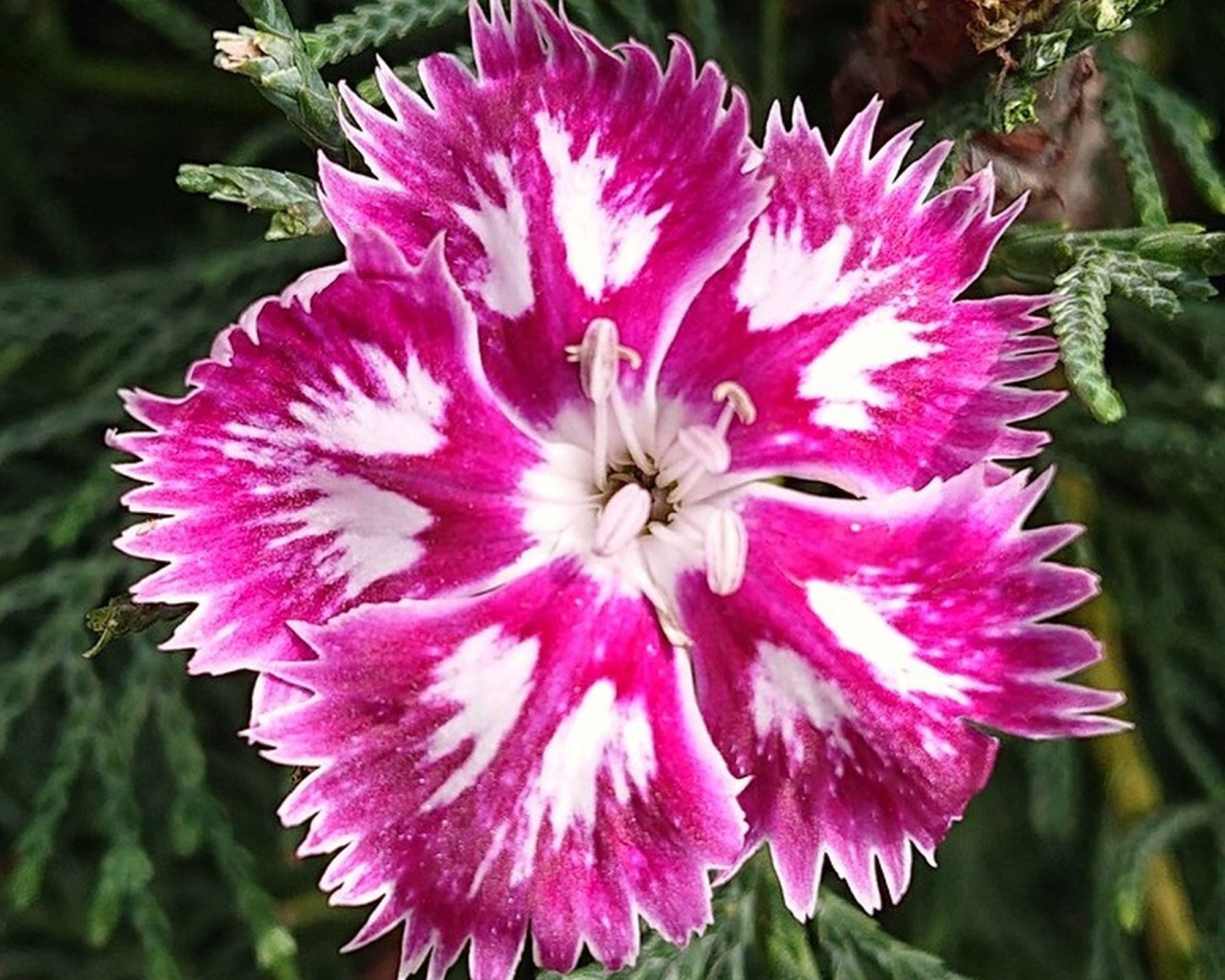
- Hardiness: USDA 6b/7a
- Height: 8-10in (20-25cm)
- Spread: 8-10in (20-25cm)
Dating back to the 17th century, this strong-growing and prettily-patterned heritage pink bears single, clove-scented blooms from late spring to midsummer. The white fringed petals are heavily laced with feathery magenta markings and flowers emit a sweet clove perfume.
Grow it along garden path edges amongst a variety of different thymes and aromatic wall germander (Teucrium chamaedrys).
11. ‘Red Carpet’
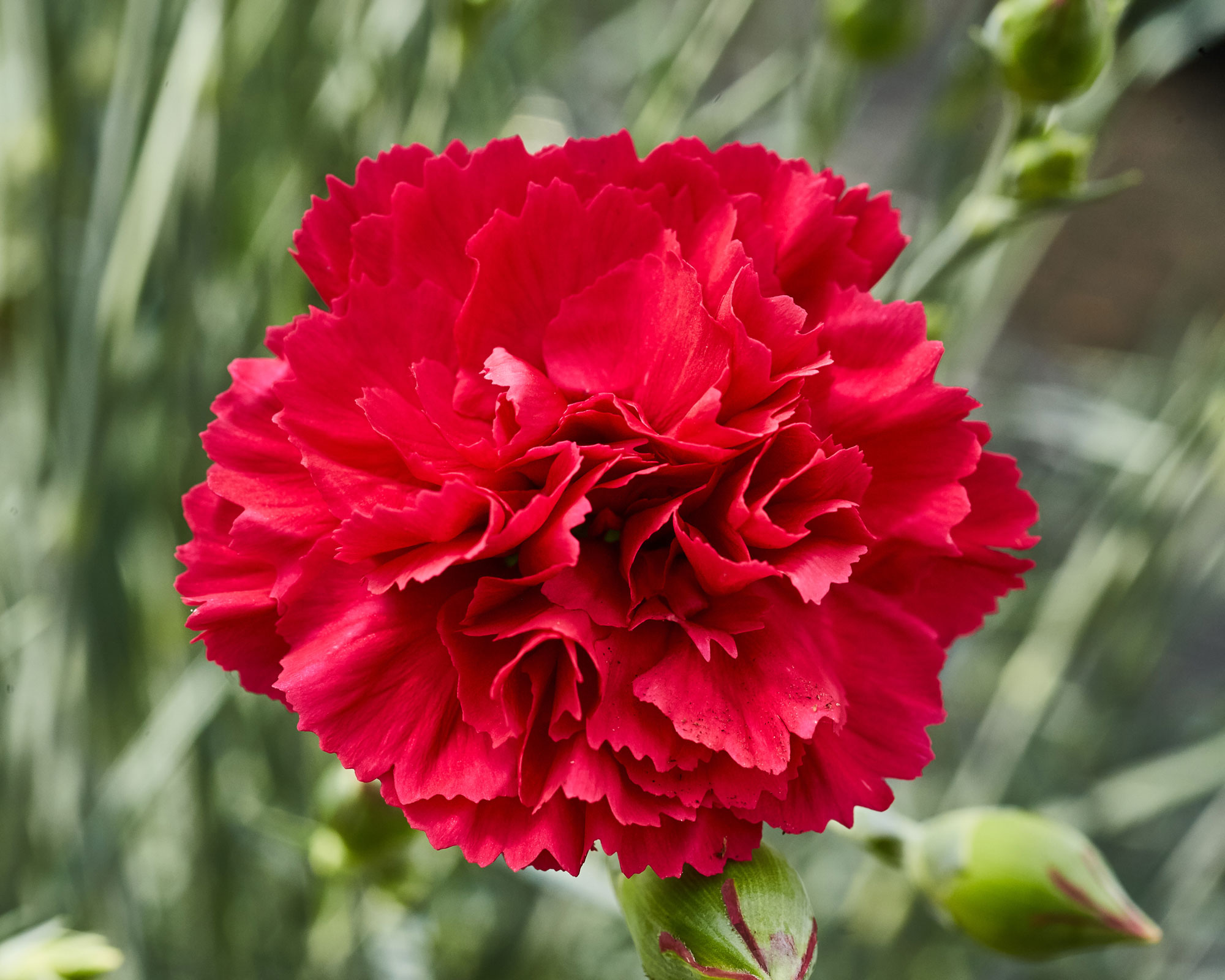
- Hardiness: USDA 6b/7a
- Height: 12in (30cm)
- Spread: 160in (40cm)
Red is not my favorite color for a pink but this cultivar delivers plenty of bright red semi-double blooms with clove-like scent over a long period from early summer into fall.
Held on long stems over compact grey-green foliage the blooms have been bred for cutting and would make a great addition to any selection of the best cutting garden flowers. Imagine it rising among gypsophila.
12. ‘Rose de Mai’
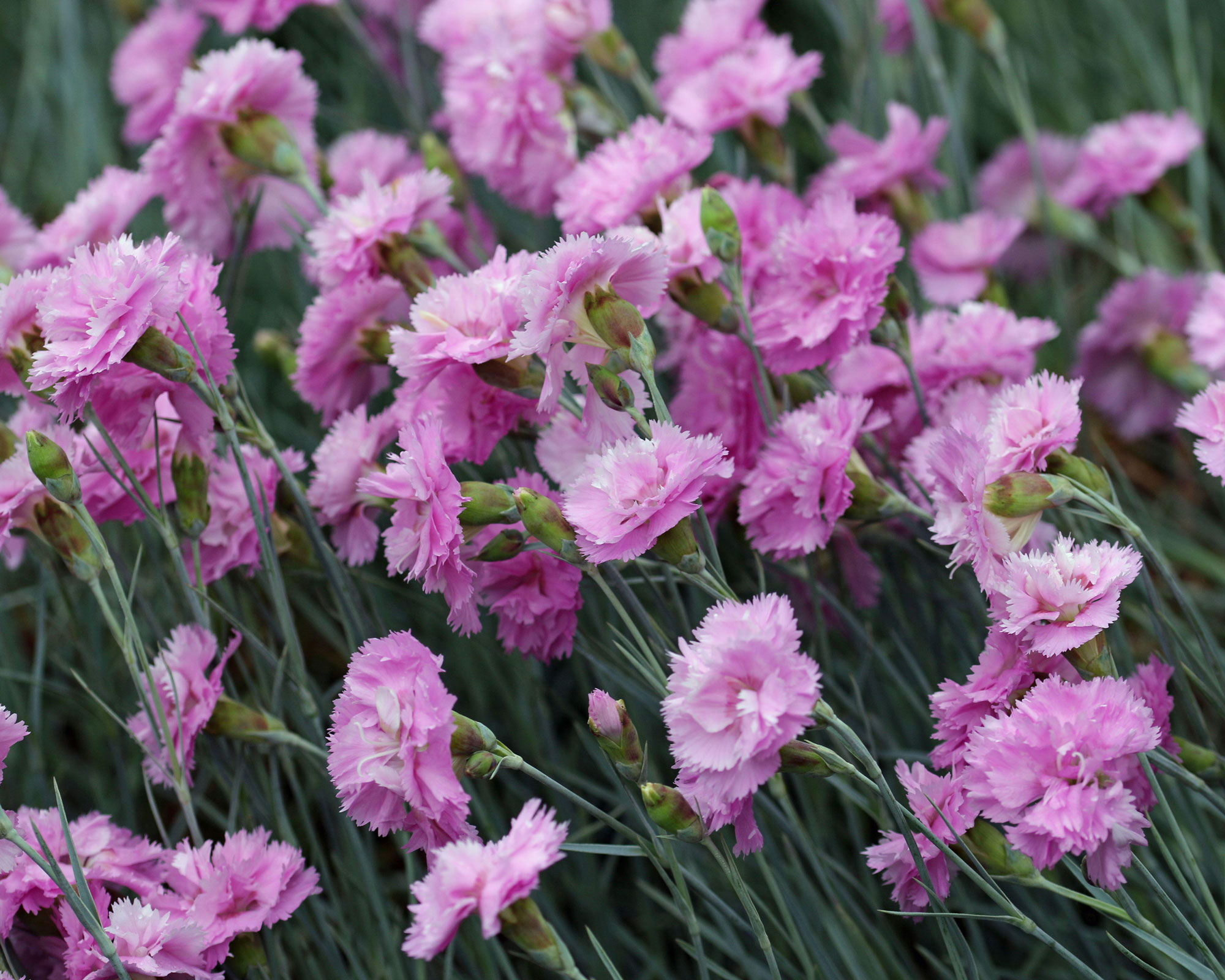
- Hardiness: USDA 6b/7a
- Height: 10-12in (25-30cm)
- Spread: 16in (40cm)
This delightful heritage cultivar dates back to the 1820s. Neat, compact plants begin blooming from late spring into summer, opening candy-floss-pink dainty but double blooms full of petals that are darker at the base and deeply crimped at the edges.
There is a rich clove scent best appreciated by planting in a raised bed, or it also makes one of the best plants for retaining walls when planted in a sunny bank atop a stone retaining wall, perhaps with clock-faced single Dianthus ‘Raspberry Swirl’.
13. Dianthus strictus var. pulchellus
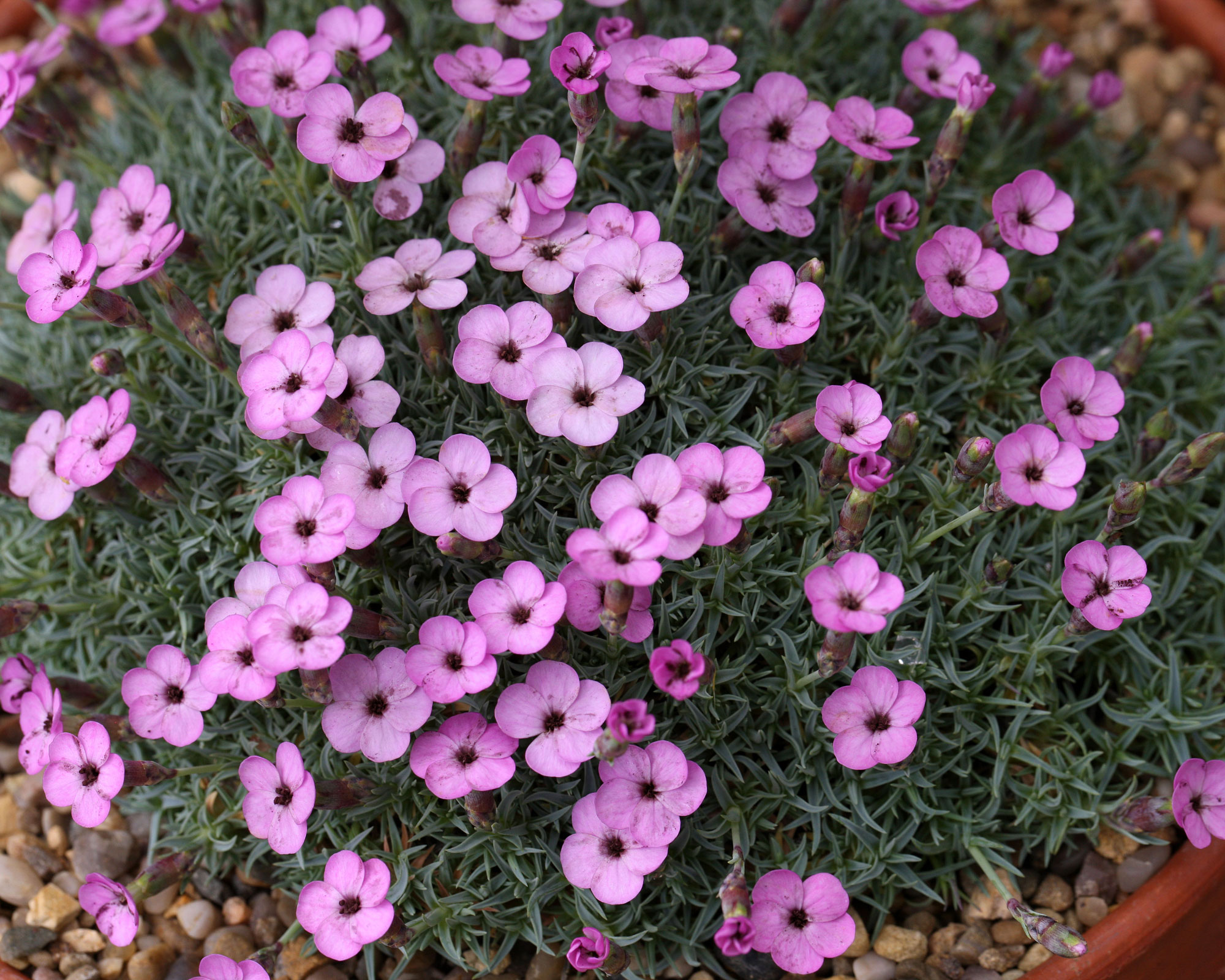
- Hardiness: USDA 6b/7a
- Height: 3in (8cm)
- Spread: 6in (15cm)
This dainty little alpine dianthus is perfect for a sink, container or rock crevice. Neat hummocks of small evergreen silvery grey-green leaves are studded by petite pink blooms in summer, each with a darker eye.
Provide well-drained, gritty compost. Mulching with a layer of grit or small grade shingle will protect it from winter wet.
14. ‘Tatra Ghost’
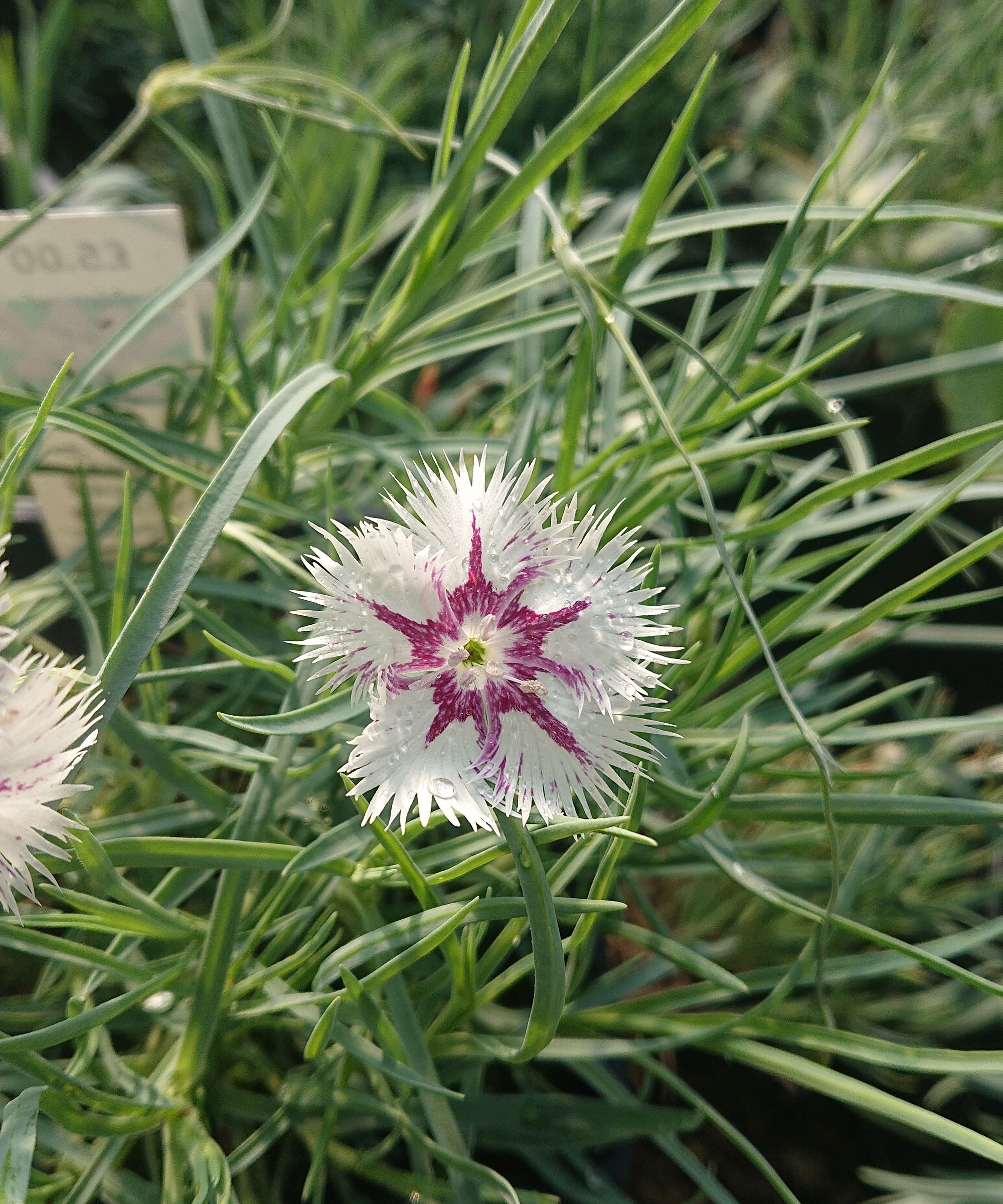
- Hardiness: USDA 6b/7a
- Height: 10in (25cm)
- Spread: 16in (40cm)
For those who love the rare and extraordinary, this garden pink bred in 2005 from parent plants collected in the Tatra Mountains along the Slovakian-Polish border is generally described as alpine.
A far cry from showy doubles the single white blooms with frilly, serrated edges are marked with pink veins, fading with maturity. The wan, fragrant blooms are like scraps of old silk fraying with age.
15. 'Tequila Sunrise'

- Hardiness: USDA 6b/7a
- Height: 18in (45cm)
- Spread: 18in (45cm)
From the Cocktail Series, dainty upright plants produce eye-catching single blooms of fluttering pale peachy-pink with an unusual warm apricot eye picked out with deep coral pink.
The scented flowers open over a long period from early summer to fall and look great in garden borders, containers or displayed in a vase. Plant alongside purple-leaved sage.
16. ‘Widecombe Fair’ AGM
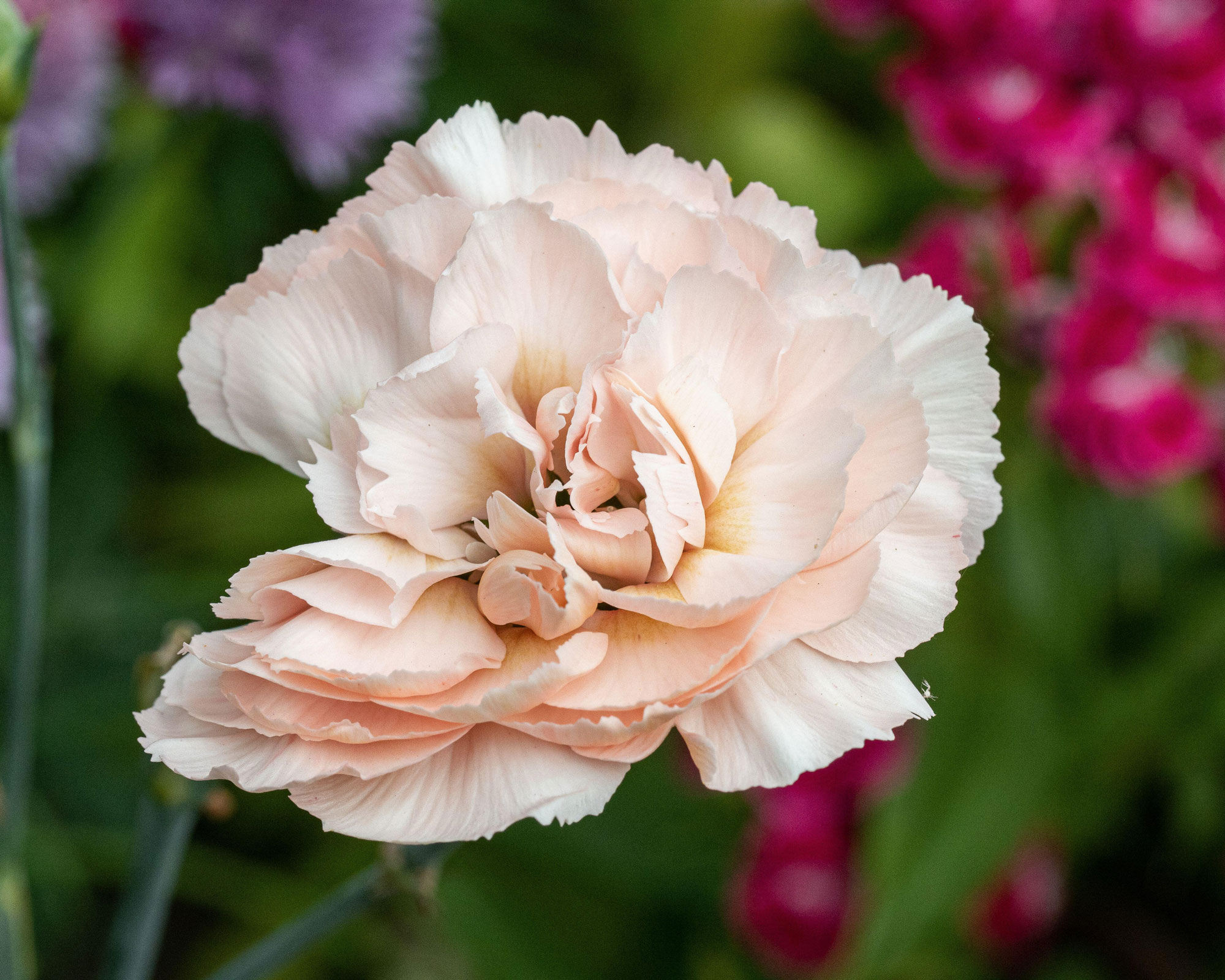
- Hardiness: USDA 6b/7a
- Height: 12in (30cm)
- Spread: 12in (30cm)
One of Cecil Wyatt’s famous Devon-bred pinks from his edge-of-Dartmoor nursery, this double-flowered cultivar dates back to 1971. Blooms are a soft peachy-pink and deliciously clove-scented.
A good choice for the front of a mixed border in sunny, well-drained soil, perhaps backed by the contrasting spires of lilac-purple Balkan clary Salvia nemorosa ‘Amethyst’.
How many varieties of garden pinks are there?
There are 300 species of Dianthus from Europe and Asia. Whereas carnations descend from D.caryophyllus, the older garden pinks with strong scent and only one period of flowering have D.plumarius in their parentage.
Carnations may have been introduced to Britain as early as the Norman Conquest and pinks were fashionable in Elizabethan gardens. Laced pinks were especially popular amongst the Paisley weavers of Renfrewshire during the 18th and 19th centuries but these plants crave clean air and industrial pollution made their cultivation difficult. The cultivar ‘Paisley Gem’ dates from this period.
Long-flowering garden pinks were bred by crossing old-fashioned sorts with perpetual flowering carnations to create plants that reliably repeat flower from summer to fall when dead-headed and well-tended. Not all have rich perfume, so double-check to avoid disappointment.
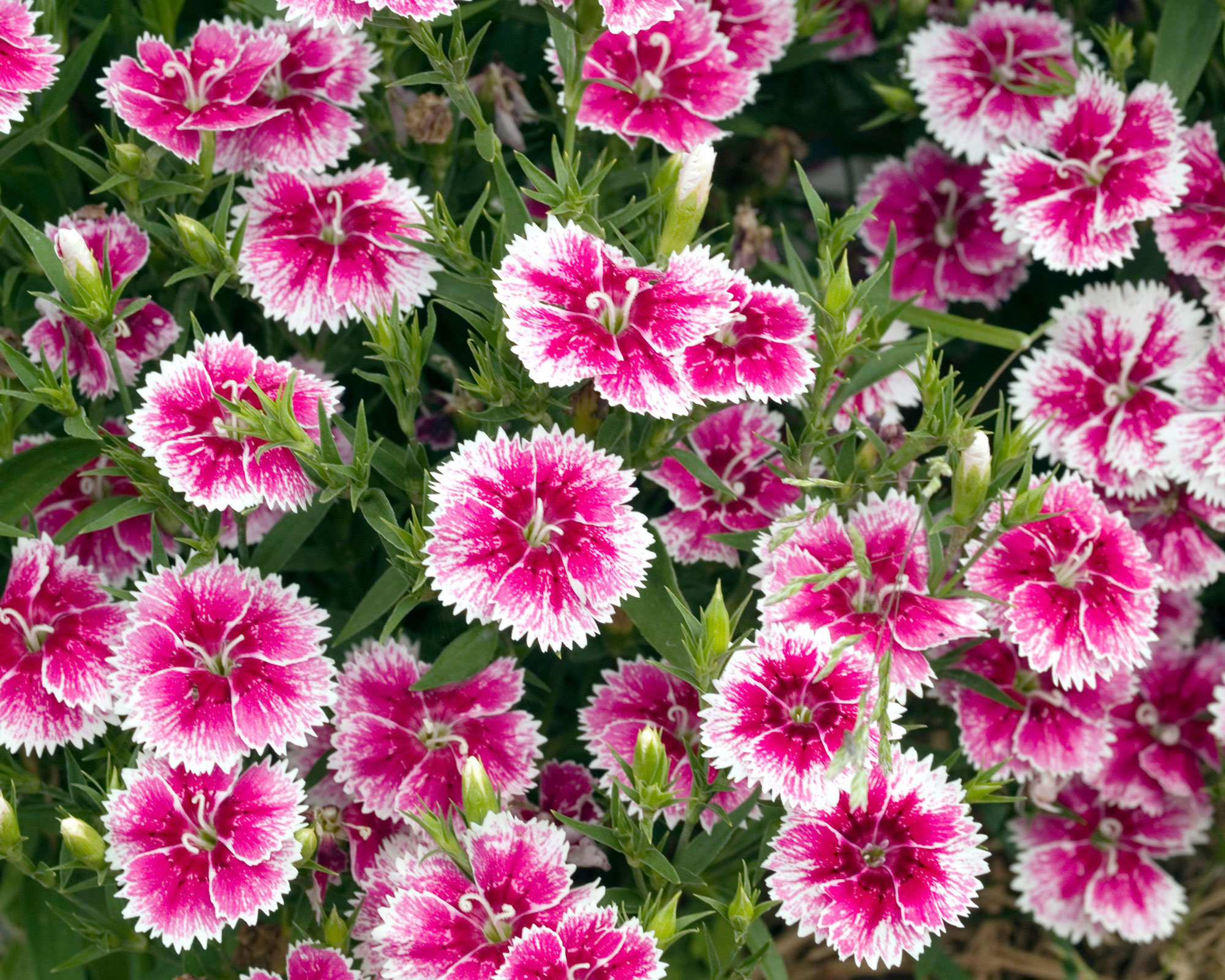
How can I make sure my garden pinks have a long life and plenty of flowers?
To make sure garden pinks have a long life and plenty of flowers plant into well-prepared soil, in sun. Although an open position of sun and well-drained neutral or alkaline soil types is a standard, pinks will tolerate a little shade and improved clay soils, though long woody stems and a shorter lifespan can result.
Unpack promptly plants arriving as plugs and let them fill 3.5in (9cm) pots with roots and growth before planting out.
In groups, set them 14in (35cm) apart. Cultivars bred to repeat-bloom will require dead-heading and watering during prolonged dry spells. A trim after flowering or in autumn helps keep plants compact.
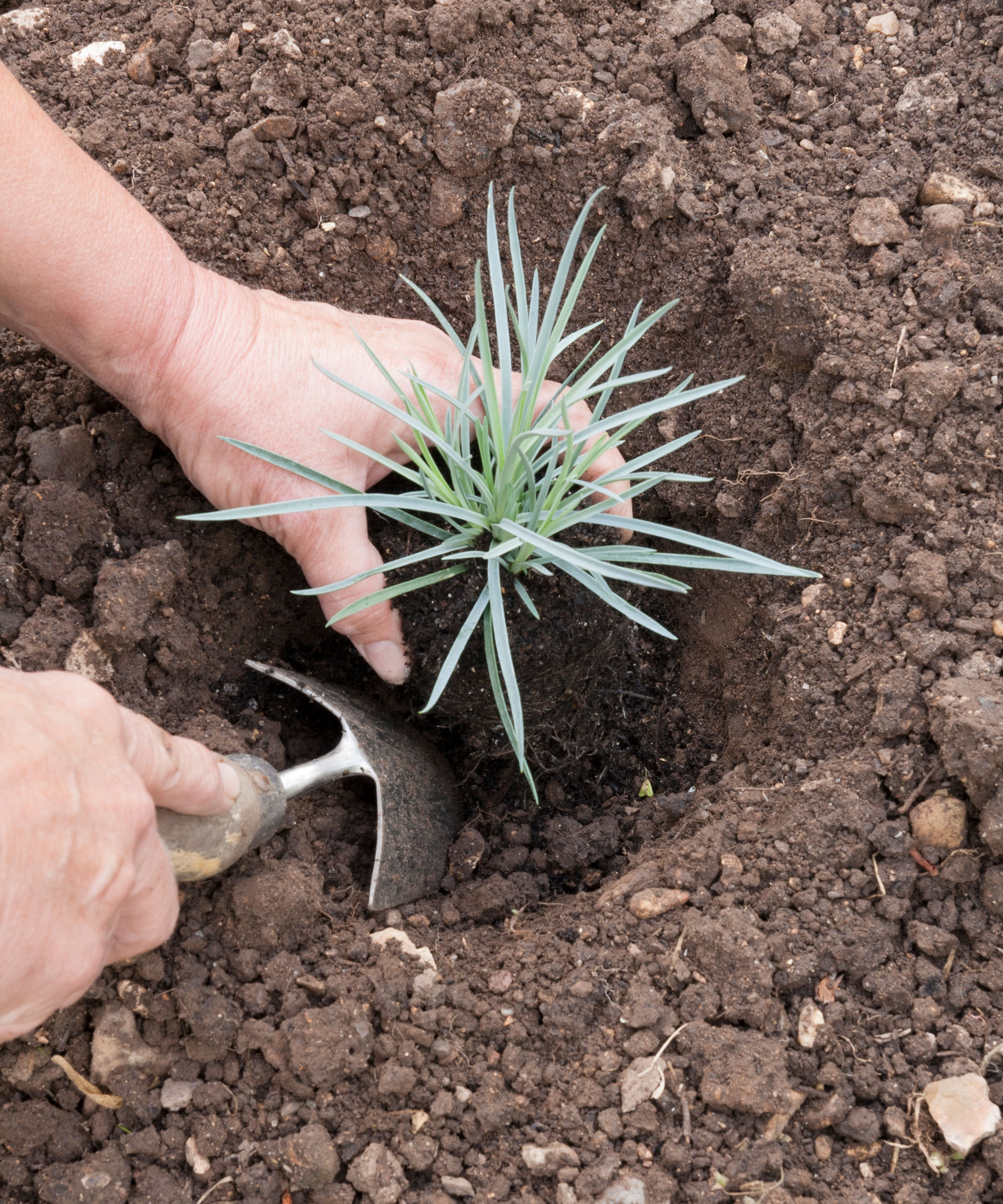
I’ve heard of the Cheddar pink. Is this a British native and can I grow it?
The dainty Cheddar pink (Dianthus gratianopolitanus) also known as firewitch has its stronghold in the limestone Mendips, particularly Cheddar Gorge where it was discovered around 300 years ago.
Over-collection in the past has driven this pretty wild flower to inaccessible ledges and it is now protected. Plants make a summer show of fringed, pale pink flowers with strong clove scent. Nursery-raised plants are available.


Having trained at Kew Gardens in London, worked in parks department nurseries and as Glasshouse Supervisor at RHS Wisley, Anne has been a freelance horticulturist since 1986. Anne writes for Amateur Gardening and has been a regular panelist on BBC Radio 4’s Gardeners’ Question Time for 27 years. A large plot full of wildlife habitats, edible and ornamental plants is Anne’s workshop and inspiration.
